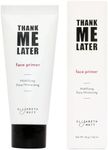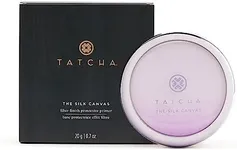Buying Guide for the Best Pore Minimizing Primer
Choosing a pore-minimizing primer can make a big difference in how your makeup looks and lasts throughout the day. The right primer helps to create a smooth base, blurring the appearance of pores and helping foundation apply more evenly. When shopping for a primer, it's important to consider your skin type, the finish you want, and any additional benefits you might need, such as oil control or hydration. Understanding the key features of pore-minimizing primers will help you find the best fit for your unique skin needs.TextureTexture refers to how the primer feels and spreads on your skin. It can range from lightweight gels to creamy or even mousse-like consistencies. A lightweight, gel-based texture is often best for oily or combination skin, as it feels less heavy and absorbs quickly. Creamier textures may suit dry or normal skin, providing a bit more hydration. If you want a primer that feels invisible and doesn't add weight, go for a thin, gel-like formula. If your skin is dry or you prefer a more nourishing feel, a creamier texture might be better.
FinishThe finish of a primer describes how your skin looks after applying it—matte, natural, or dewy. Matte finishes are great for oily or combination skin, as they help control shine and keep pores looking minimized throughout the day. Natural finishes work well for most skin types, offering a balanced look without too much shine or flatness. Dewy finishes add a glow, which can be nice for dry or dull skin, but may not be ideal if you want to hide pores or control oil. Choose a finish that matches your skin type and the look you want to achieve.
Blurring IngredientsBlurring ingredients are what help minimize the appearance of pores. Common ones include silicones (like dimethicone), which create a smooth surface, and powders that scatter light. Silicones are effective for filling in pores and fine lines, making skin look smoother. If you prefer a more natural formula, look for primers with plant-based blurring agents or mineral powders. If your main goal is to make pores less visible, a primer with strong blurring ingredients is key. If you have sensitive skin, you might want to avoid heavy silicones and opt for gentler options.
Oil ControlOil control is important if you have oily or combination skin, as excess oil can make pores look larger and cause makeup to break down. Some primers contain ingredients that absorb oil and keep your skin matte for longer. If you struggle with shine or your makeup tends to slide off during the day, look for a primer that specifically mentions oil control or mattifying properties. If your skin is dry, you may not need this feature and can focus on hydration instead.
HydrationHydration in a primer helps keep your skin comfortable and prevents makeup from looking cakey or settling into pores. Some pore-minimizing primers include moisturizing ingredients like glycerin or hyaluronic acid. If your skin is dry or you notice flakiness, a hydrating primer can smooth your skin and make pores less noticeable. If your skin is oily, you might want a lightweight formula that hydrates without adding extra shine.
Compatibility with MakeupNot all primers work well with every type of foundation or makeup. Some are designed to pair best with liquid foundations, while others work with powders or creams. If you have a favorite foundation, check that the primer is compatible—sometimes water-based primers work best with water-based foundations, and silicone-based primers with silicone-based foundations. This helps prevent pilling or uneven application. Think about the makeup you use most often and choose a primer that will work well with it.
Skin SensitivityIf you have sensitive or acne-prone skin, it's important to look for primers that are non-comedogenic (won't clog pores) and free from potential irritants like fragrance or alcohol. Some primers are labeled as suitable for sensitive skin and contain soothing ingredients. If you know your skin reacts easily, always check the ingredient list and consider doing a patch test before using a new product all over your face.















